OSMS has studied how maker communities of different countries individually responded to the crisis. We explored how they solved problems specific to their geography, society and other factors. We provide the resulting insights in the form of individual national case studies for free, vetted for accuracy by the respective national maker communities. These case studies serve as a blueprint for maker groups in countries that want to establish or improve nation-scale coordination.
1. History
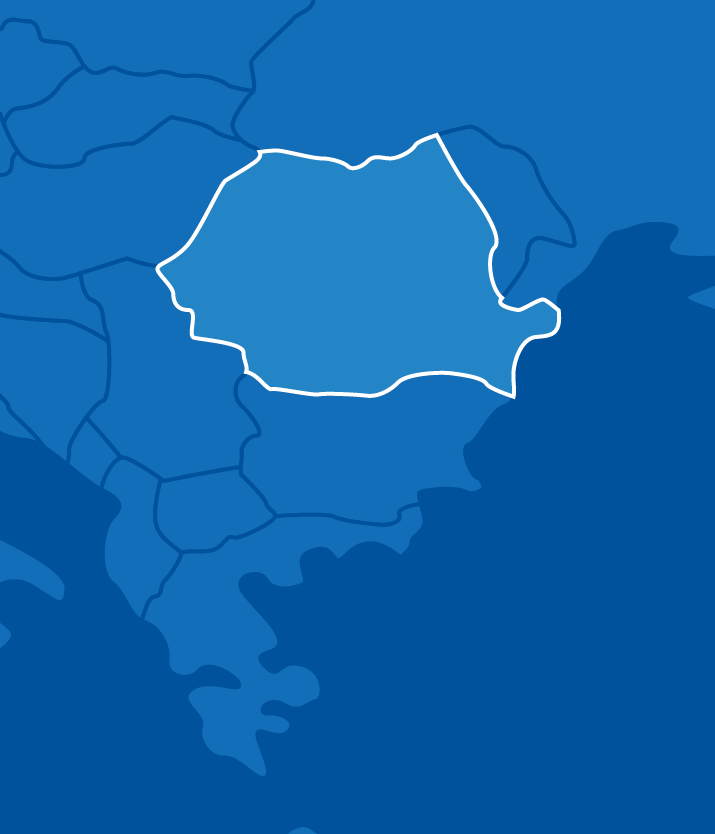
Image: OSMS
Romania has 19 million inhabitants, and is about the geographic size of the UK. After the fall of communism in 1989, politics in Romania have been plagued with instability and corruption. Around 3.4 million Romanians have moved abroad between 2007 and 2015, giving Romania the second highest emigration growth rate in the world. Civil disdain came to an apex when a 2015 fire in a nightclub killed and injured 200 people and created sustained protests around the country. Romanians blamed inefficient authorities and institutional corruption for the poor medical system unable to treat burned patients and save more lives.
This was a turning point in the internal public health perception of Romania: Many individuals concluded that in matters of their health, they are on their own and the system is not sufficient in providing proper care. Corupția ucide (“Corruption Kills”), Code for Romania, Geeks for Democracy, Funky Citizens and many others were volunteer movements born out of people wanting to get involved in revamping the system at large. New political parties have emerged (USR, PLUS), aiming to approach public administration differently, as opposed to the traditional who failed. The situation is slowly improving since 2015 due to anti-corruption efforts. Social Media further enabled the next generation of Romanians to organize efforts and coagulate around initiatives, which laid the necessary groundwork for Romanian’s distributed COVID response.
Romania’s initial covid outbreak was relatively contained, however many of the infected people were healthcare workers. By April 13th there were 6,633 confirmed Covid-19 cases in Romania, 812 were medical personnel, 12% of the total people infected in Romania.
Although Romania experienced a similar growth of the maker movement during the pandemic as other countries, as well as the pivot of industries into creating masks and visors, ties between the national maker organizations in Romania are rather loose, and initiatives operate in parallel.
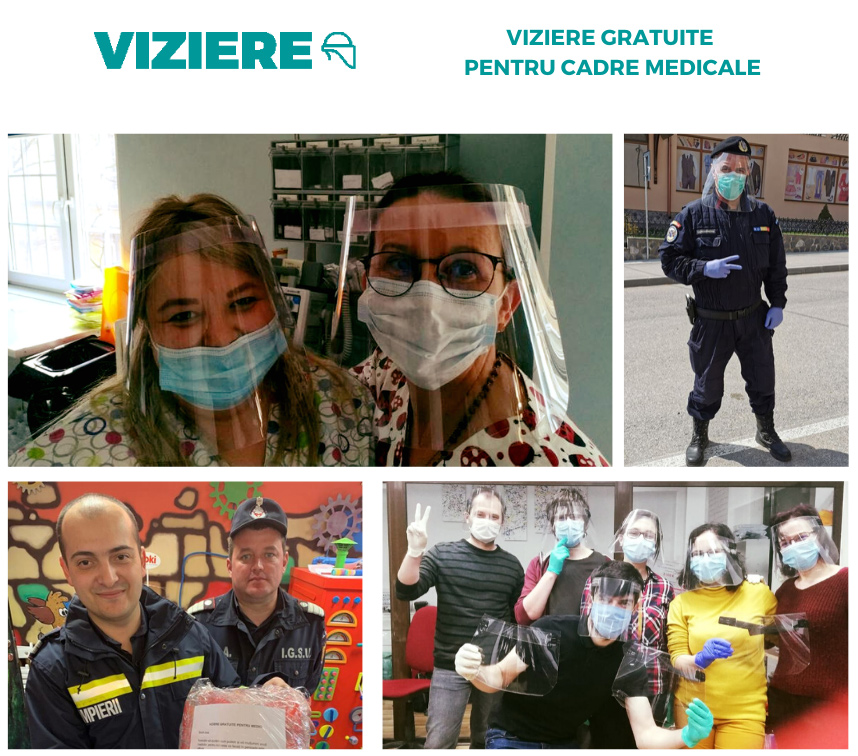
Image: Viziere.ro
The first and largest maker initiative in Romania is Viziere.ro, founded by Mihai Toma, a member of the Nod makerspace community with the help of Medical Students Society; the founding group included a team of 9 people.. Following a 30 page application and an expedited 2 week waiting process, the face shield prototype received the necessary emergency authorisations from the Romanian government to be produced and distributed.
Cristiana Bogateanu joined as the project manager for Viziere.ro and created procedures and the website in a 72-hour sprint with her volunteers. On the first day of public operation, Viziere received 3,000 requests from around the country, totaling 20,0000 face shields. The affiliated maker network grew rapidly nationwide as a result, reaching as far as into the neighboring Moldavian Republic. Cristiana used her project management background to train Moldavians and prepare a set of custom procedures and documentation for them, and essentially franchised Viziere.md across the border.
The Viziere command center is located in Bucharest and the website is based on that production site. The website also takes donations and is linked with various “regional centers” that are businesses, manufacturers and NGOs that are working on the production of visors.
Viziere uses a single all-PET-G open source face shield model, which made it easy to successfully scale production across facilities. Viziere encourages individuals who want to get involved to support the organizations in their region. There are hundreds of small makerspaces in Romania, and Viziere partners with a fraction of them.
There are also local makers communities, of which the most active is the one in Sibiu, producing all kinds of PPE.
Fab Lab Romania and other makerspaces were already making 3D printed face shields on their own, but joined the Viziere.ro, as it became a movement.
PlanB (founded by Silviu Dovancescu) describes itself as a meeting point between the equipment needs of medical workers from the Romanian hospitals and volunteers from engineering, medicine, 3D production and materials productions, distribution, volunteers with financial resources and time they can donate. Their focus point is making PPE by adapting snorkeling masks.
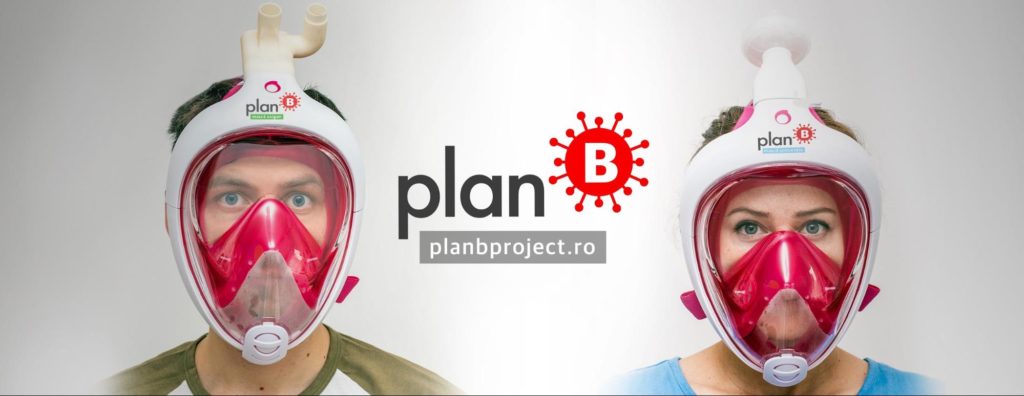
Image: Plan B Project
Their FreshAir (PAPR) equipment won 2nd place in the category “Medical workers protection” at the pan-European hackathon EUvs.Virus, organized by the European Innovation Council. It was developed with Alin Deteşan,Teo Pavel, Iulian Carp from Sibiu Makers Community and they joined PlanB.

Image: FreshAir
Lavinia Petrariu, a marketing entrepreneur, was inspired by OSMS to create, together with Razvan Mihailescu, Open Source Initiatives (OSMS Romania), a nation-wide coordinating between Romanian response initiatives through a Facebook group. The group is a space for discussions and exchanging feedback.
Several project ideas and collaborations were born through OSMS Romania, like PlanB Project or the award winning FreshAir projects. Romanian makers coagulated around the most visible initiatives. Facebook groups were less successful, compared to the Facebook pages that were easily shareable and more visible to the general public.
Viziere.ro (also one of the founders of Make 4 Romania) is the only currently active platform that keeps producing PPE. As time went by and the COVID numbers decreased in May and June 2020, many of the initial volunteers of other projects got back to their jobs. Only the most sustainably organized groups remained in place, but it is not known for how long they’ll continue. COVID numbers have begun growing rapidly again in July, so the situation remains in flux.
Donations have stopped for all platforms, but the demand for equipment is rising.
Viziere.ro Quick Facts
Face Shields produced
Hospitals and Institutions helped
Regional hubs
Individuals and companies donated
PlanB Quick Facts
Donation Requests
Modified Snorkeling Masks built
National Supply+Demand Map
Types of Open Source Equipment Produced in Romania
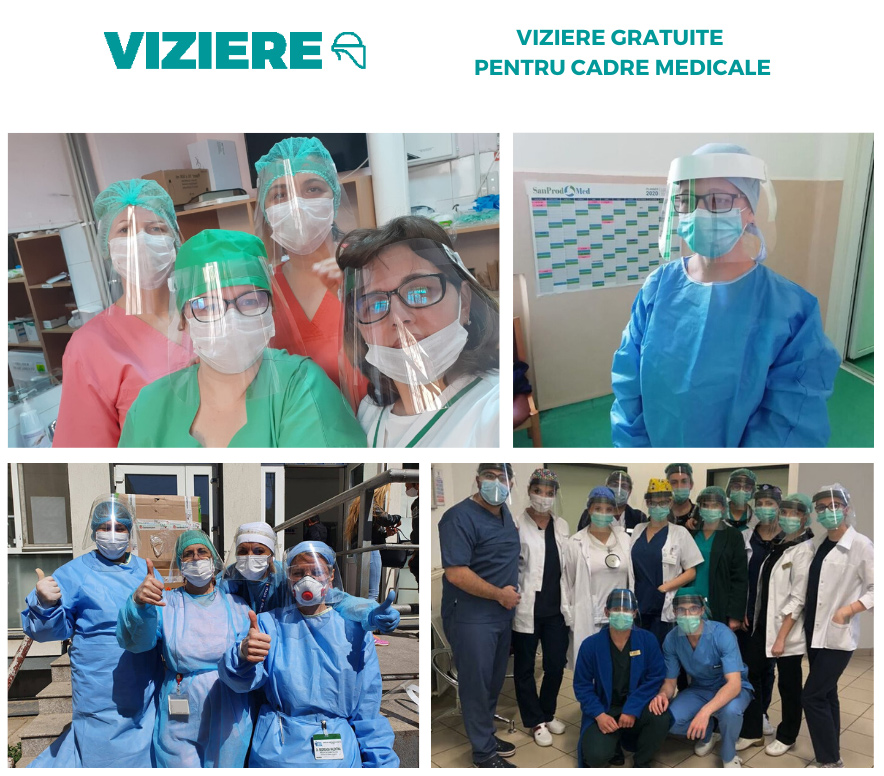
Image: Viziere.ro
- Face shields PET-G (visors from Vizire.ro – 320,205 units delivered)
- Snorkeling masks adaptations (PlanBproject.ro: prevention mask, oxygen mask – 2000 units delivered)
- Intubation boxes (in plexiglass by Plan B, and Resize Media, Sibiu Makers Community,in Polycarbonate 1mm by Nod makerspace https://make4.ro/cutii-intubare/)
- Autonomous disinfection robot with UVC light (MUV Santiser aka Victor, by Modulab, funded by a BCR – a Romanian bank, is now in hospital testing phase)
- Disinfectant Liquid
- PAPR – portable air-purifying respirator (FreshAir by PlanB – 22 units were delivered to hospitals)
- Mechanical Ventilators (Ventila ™, 5th prototype so far, Ambu Bag based, not yet ready; AirUp)
- Sewn masks (impossible to track, there were many and not at all centralized)
- 3D printed masks (Sibiu Makers Community, with screw-on filters (Silviu Stroe https://www.facebook.com/groups/opensourcecovid19medicalsupplies/permalink/684221662388229 -about 500 units were printed in several countries, mostly USA, none in Romania, all via https://grabcad.com/library/breathing-mask-with-screw-in-filters-version-2-1 still have to check the status of this project, if it’s been tested or not)
- TNT polypropylene gowns and feet protection (https://make4.ro/costume-protectie/ -will find out the numbers)
- Several 3D printed accessories ( Charlotte valves and other components (https://make4.ro/accesorii/)
2. Management /Reporting Structure
In terms of reporting, Viziere.ro acted as command centre for face shields. All the orders were centralized here and sent to the responsible regional centers, which took care of their production, packing and delivering. The central unit in Bucharest helped the 23 regional centers with coordination, knowledge, financial resources and received weekly reports from them.
Viziere helps facilitate a directory of regional organizations that are in the process of creating PPE gear. On a local level they work with local healthcare centers to distribute the PPE that is created in their Bucharest location. Other than that Viziere only serves to connect people to other organizations and NGOs and the ability to send them donations. The data they collect is from the 23 regional centers that they are in contact with throughout Romania.
3. Data Management
The organizations do not have a map, but Viziere does collect data from its various partners in terms of the amount of volunteers and amount of visors produced between the regional centers in Romania.
PlanB has a map that showcases demand, supply, and fulfilled PPE deliveries, nation-wide.
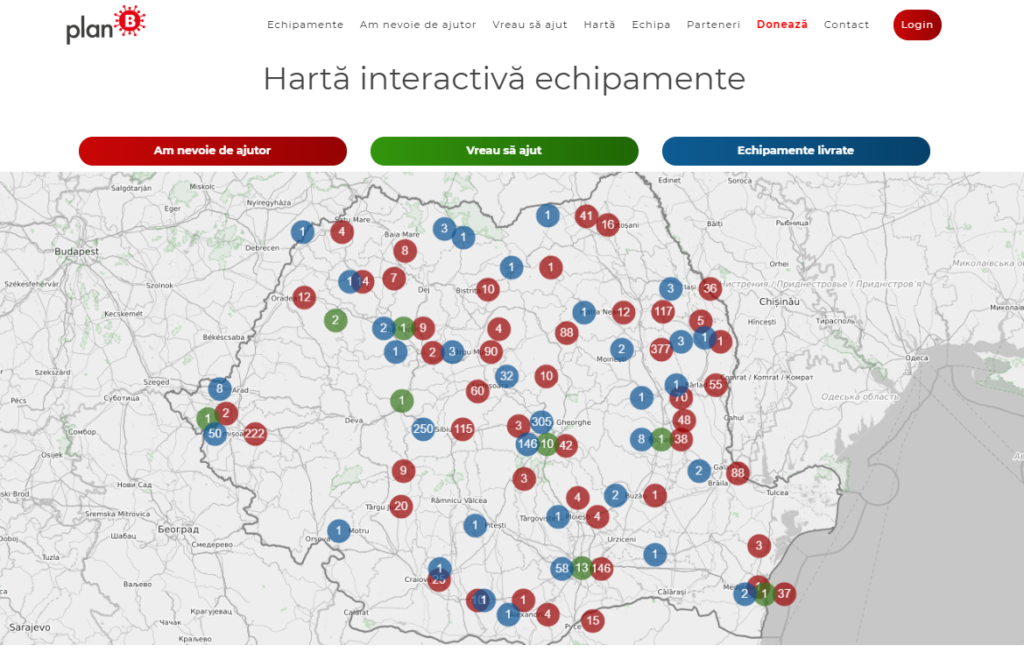
Image: Plan B Project
The prefered collaboration tools are Facebook Communities for national scale communication and ideas sharing (like OSMS Romania, Sibiu Makers Community etc.), WhatsApp Groups for internal communication and WhatsApp and Discord for project development.
A centralized report for all the Romanian makers hasn’t been done, so far, although there have been many initiatives for centralizing the data (from makers to beneficiaries).
The most notable platform that connects the makers and the donors is Make for Romania. It was launched at the end of April, by Nod makerspace and gained traction rather quickly. One of their projects is building a national maker database.
6. Politics & Enablers
The national organization is partnered with 24 companies and is sponsored by another 23. The difference being that the partnered organizations are those that contribute materials, supplies, and laser cutting, while sponsored companies provide donations and support. A major delivery company, Fan Courier, distributed packages for free.
Most of the partnerships the organization has are industry and NGOs, they do not have affiliation with the national government. Due to the government’s oversights in terms of expanding medical capabilities of the country and a general air of mistrust, little attempts were made to work with the Romanian government.
While the current government seems to be doing an adequate job in terms of managing its COVID responsibilities, makers were not on their radar as a resource to utilize. Although on paper the government offered wide-sweeping emergency authorizations for PPE, in practice they didn’t have the necessary means to test newly designed equipment.
For face shields and sewn masks, emergency authorizations were easy – but for more advanced equipment (such as open source ventilators) there was no bandwidth. There are still unsolved requests since the end of the state of emergency period, which ended in mid-May 2020. To the credit of the Romanian government, they prolonged the validity of the few temporary authorisations they gave, from 2 to 12 months, enabling makers to continue building face shields and face masks with the government’s support.
7. Funding

Image: Make4Romania
Most of the maker efforts were funded by donations from companies as well as individual donations. Money went towards purchasing raw materials for PPE production, as well as towards local distribution. Viziere.ro only collects donations to be put towards their Bucharest location while all other donations are directed towards the local NGOs that operate throughout Romania.
The most help came from private companies funding many of initiatives on all fronts, not only in PPE making. One NGO, Daruieste Viata (“Give Life”) even built a modular hospital in 6 weeks (1200sqm, 38 ICU beds, 2.2mil EUR investment, with funding donated from 250,000 Romanian citizens and 650 companies). This initiative was unfortunately hardly mentioned in public communication.
Many PPE initiatives that required more time to be tested, like Open Source Ventilators, didn’t receive funding to be sustainable. The Romanian Modulab autonomous UVC disinfecting robot received funding in July 2020 and began testing in hospitals.
There are several initiatives listed on the Make for Romania website, but only a few of them received funding.
Links / Press
Read Further Case Studies
Brazil
Despite enormous infrastructure challenges, Brazilian makers have stood up a decentralized national response resulting in 1 Million + pieces of PPE made across hundreds of maker groups, with a growing nation-wide coalition.